|
|
|
|
|
|
New scale model maquette of the National WWI Memorial sculpture
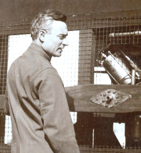
As you read in last week's Dispatch, Fleet Week New York City in May will have a WWI theme. The story of America's involvement in the war is very much a NYC story. Even before the US enter the war, the horrible Black Tom explosion damaged the Statue of Liberty, and the ill-fated Lusitania departed on her last voyage from Pier 54, on the West Side. Some of the most famous units of the war were NYC units — The Rainbow Division, the Liberty Division, the Harlem HellFighters, and the Lost Battalion. As we roll toward Fleet Week NYC, we will share some stories that show the city’s close connection to the war. This first story is about the wartime mayor, John Purroy Mitchel. After failing to win re-election in 1917, he enlisted in the Army Air Service as a flying cadet. Click here to read the entire story about the second youngest person elected mayor, who was often referred to as “The Boy Mayor of New York,” and came to a tragic end in World War I.
|

Over the years, we have met several members of our WWI community who have gotten personally involved in hands-on projects, projects that help them to really embrace our WWI history. They include trench work restorations, tabletop diorama creations, reenactor impersonations, restorations of trains/tanks/ trucks/artillery pieces/ambulances/warships, etc. We love these projects -- and we always find interesting stories behind those people who undertake them. Our latest such project is being done by our friend Jared Shank, of Ohio. Jared is an Army veteran, and he only just started working on an incredible find -- a WWI-era light artillery piece with a remarkable history. We were lucky to share some time with Jared, and to hear his story--click here to read the complete interview.
|
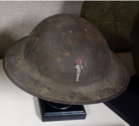
When America entered WWI in 1917, American men between the ages of 15 and 45 were required to register for the draft. This included not only U.S. citizens, but also resident aliens who had filed a declaration of intent to become a citizen. This presented a problem since many had immigrated, in part, to escape the long military service required by many European nations, according to the National Park Service. “Registrants for the draft who claimed exemption on the ground of being aliens,” said the Daily Dispatch Nov. 18, 1918, “and there were many in this country, will now have a long time in which to ponder the advisability of their claims. Such persons are forever barred from becoming citizens of the U.S.” Click here to read more about the 500,000 immigrants from 46 nations who made the choice to serve in America’s armed forces during WWI, making up 18 percent of the troops.
|
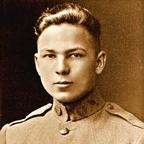
Episode #116
Highlights: Frank Buckles, The Last Doughboy!
Episode #116
Host - Theo Mayer
100 Years Ago This Week
- Host | @ 02:15
Colonial Self Determination?
- Mike Shuster | @ 11:35
Revisit Wilson’s 14 points
- Host | @ 15:50
Doris Kellogg, Mechanic, Nurse, & more
- Dr. Edward Lengel | @ 20:10
Congressional Gold Medal for Hello Girls?
- Host | @ 26:00
Valor Medal Review Task Force
- Dr. Westcott & Ashlyn Weber | @ 27:40
Frank Buckles stimulates legacy
- Ken Buckles | @ 33:45
Big Prize - TransAtlantic Flight
- Host | @ 40:50
Dispatch highlights
- Host | @ 44:00
|

WWI Touches Pablo Picasso
By David Allen Sullivan
While award-winning poet David Allen Sullivan visited the Paris Louvre exhibition, "Disasters of War 1800-2014," he was most struck by a painting that seemed almost irrelevant to the other artistic representations of battle carnage in the museum: A Family by the Sea by Pablo Picasso.
Sullivan, who has written poetry from the hard lens of the Iraq War in his book, "Every Seed of the Pomegranate", contemplates WWI, Picasso, and the ethics of subtlety and beauty in the face of violence. Read his poem, "WWI Touches Picasso," published for the first time on WWrite this week!
|

American doughboy Joyce Kilmer wrote "Rouge Bouquet" to honor the sacrifice of 19 U.S. soldiers killed by German shellfire in March of 1918.
Just months later, the poem was read over Kilmer's grave, after his death at the Second Battle of the Marne in July. You can read the poem here: listen for its echoes of "Taps."
|

A man is only missing if he is forgotten.
Monday's Doughboy MIA this week is Private First Class Aaron O. Holt. One of nine children of Benjamin Holt, Aaron Holt was born in Waycross, Georgia in May, 1898 and enlisted at Ft. Thomas, Kentucky, on 26 March 1917. He first trained with Company C, 4th Infantry before being transferred on 09 June 1917 to Company C, 59th Infantry, 4th Division. Holt arrived overseas with the 4th Division on 03 May 1918 and, as a ‘regular army’ division, was soon in combat. That summer in the ‘Hell-hole Valley of the Vesle’, Holt was killed in action on 12 August 1918. He left behind a young widow who would follow him into death in 1925. No other details of his death are known at this time.
Want to help us shed some light on PFC Holt’s case? Consider making a donation to Doughboy MIA and help us make a full accounting of the 4,423 American service personnel still listed as missing in action from WW1. Make your tax deductible donation now, with our thanks. Remember: A man is only missing if he is forgotten.
|

On December 19, 2014, Congress passed legislation designating Pershing Park in the District of Columbia as a national World War One Memorial. The Act authorizes the World War One Centennial Commission to further honor the service of members of the United States Armed Forces in World War One by developing the Pershing Park Site.
This WW1 Centennial Flag is made of durable nylon and measures 3x5'. This flag has the iconic Doughboy silhouette digitally screened onto it and has 2 brass grommets to hang the flag. A portion of the proceeds from the sale of this item are designated for national WWI Memorial. You can show your support, and help promote the Memorial, by proudly displaying your custom flag.
A Certificate of Authenticity as Official Merchandise of the United States World War One Centennial is included.
This and many other items are available as Official Merchandise of the United States World War One Centennial.
|
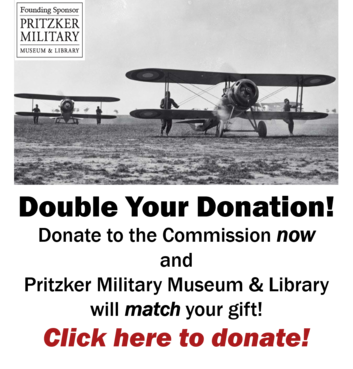
|
|
|
|
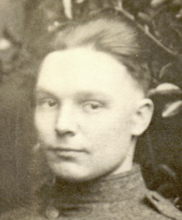
Submitted by: Donald Stone {Grandson}
Boyd Willard Stone born around 1901. Boyd Stone served in World War 1 with the United States Army. The enlistment was in 1917 and the service was completed in 1919.
Story of Service
My paternal grandpa, Boyd Willard Stone, enlisted as a private in the United States Army on September 17, 1917 at the age of 16 (yes, he fibbed about his age).
After basic training at Camp Colt in Gettysburg, PA he was ultimately assigned to Co. B, 5th Machine Gun Bn., 2nd Infantry Div.
His World War I Victory Medal shows service in the following engagements: AISNE, AISNE MARNE, ST. MIKIEL, MEUSE ARGONE, DEFENSIVE SECTOR and CHATEAU THIERRY. He received two "wound stripes": gassed in the Troyon Sector 3/27/18, and a shrapnel wound at Chateau Thierry. He was also awarded the Silver Star.
|
|
|
|
|